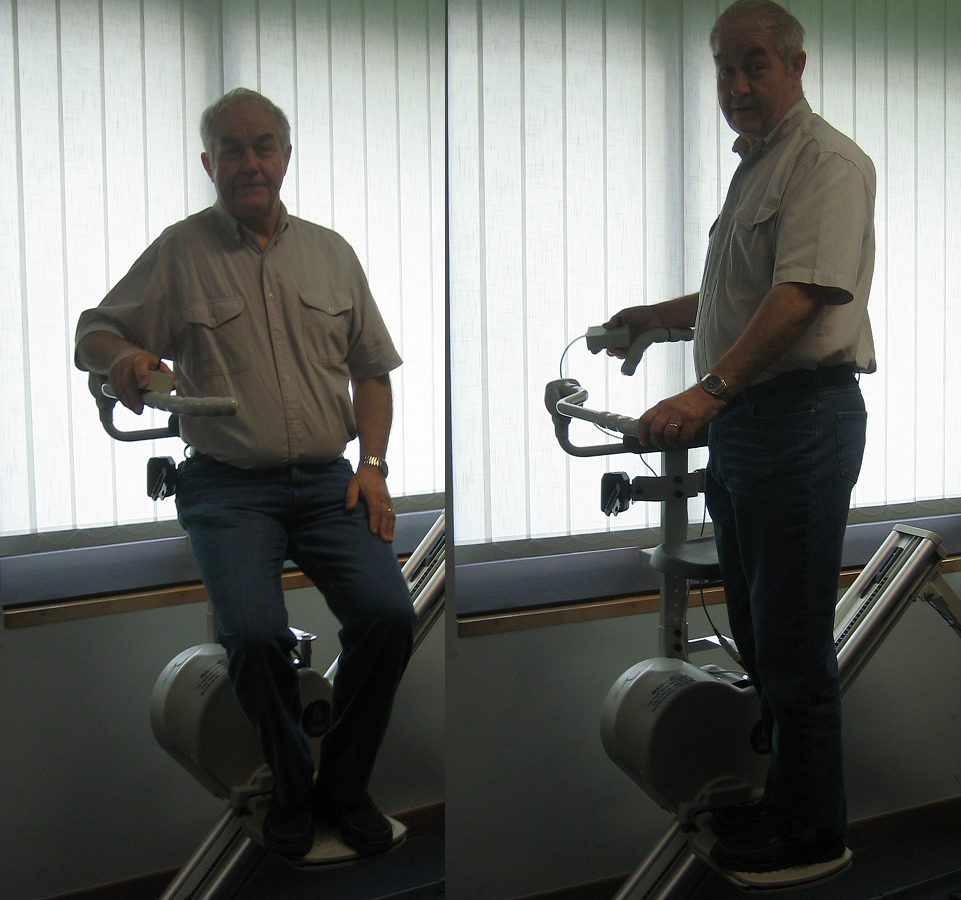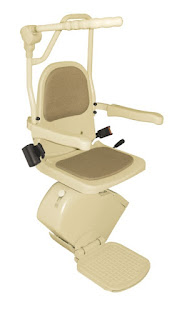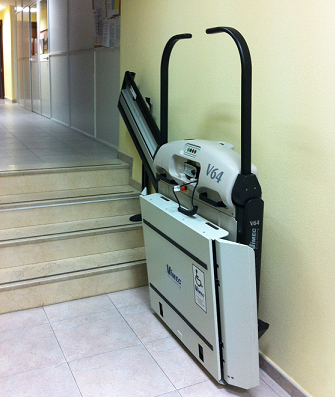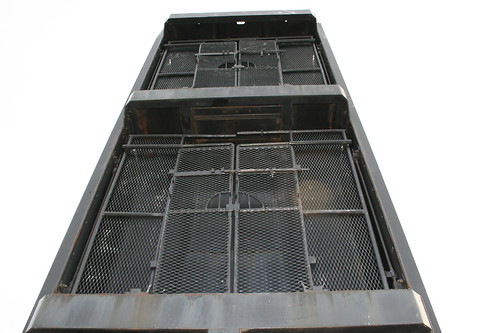"The public is wonderfully tolerant. It
forgives everything except genius" - Oscar Wilde.
What is genius?
-"An exceptional intellectual or creative power" (Oxford Dictionary).
I suppose it is fair to say that most people are of average intelligence. Some
may be described as 'bright' or 'clever' or even 'gifted'. Few of us would be
acclaimed as a genius. Without doubt, Isaac Newton, Mozart or Einstein were
geniuses. Mozart began composing at the
age of five. Studies have suggested that playing Mozart to babies could raise
their IQ level. Genius is a hard phenomenon to define or to understand how it
comes about. It is not really satisfactory to simply say that genius is defined
by a set score in an IQ test. For the purpose of this introduction I will use
the definition that a genius is a person who is not only extremely intelligent
but one who breaks new ground or is innovative with new discoveries, inventions
or works of art.
In any consideration
of intelligence, even genius, the brain has to be central. Every part of being alive
and functioning properly is dependent upon the brain, the control centre. The
brain goes further than that and allows you have a memory, to think and to
learn, store and analyze information and to be creative. The brain may well be
a part of genius but when it is affected by disease the result can be devastating.
A genius of our time - Stephen Hawking CH
CBE FRS FRSA
Shortly after
the beginning of the Second World War, a couple met at a medical research
institute. Both had studied at
Oxford
University, Frank Hawking
studied Medicine and Isobel, Philosophy Politics and Economics. Isobel entered
the University in the 1930s and was one of the first women to do so. Frank
became a medical researcher with a speciality in tropical diseases and in the
1950s became head of parasitology at the National Institute for Medical
Research and the family went to live in
St. Albans.
It would be reasonable to describe Frank and Isobel as clever - but not as
geniuses. Following their marriage, the couple had lived in Highgate. When
Isobel became pregnant with her first child, they sought greater safety in
Oxford, away from the danger of bombing in
London. Stephen William
Hawking was born in
Oxford
on January 8th. 1942. Those who knew the family considered them highly
intelligent, albeit a little eccentric. They lived a frugal life in an untidy,
badly maintained house and drove around in an old London Taxi. (Common to a
number of very clever people I have known, such mundane tasks as cleaning,
throwing away potato peelings and removing dead plants from the window sills
never seems to occur to them!) Evidently, meals were often taken in silence
during which they would all read a book. Frank's work often took him to
Africa. During one such period Isobel took the family to
Majorca for four months visiting Beryl, a friend of
Isobel, who was married to the poet Robert Graves.
On their return
Stephen attended Radlett School for a year and then entered St. Albans School
from September 1952. Frank wanted his son to attend the prestigious Westminster School, but without a scholarship the
fees could not be afforded. The thirteen year old Stephen missed the exam
through illness and so he remained at St. Albans.
In his early days, in spite of his nickname "Einstein", Stephen did
not initially shine academically. He loved making things; fireworks, model planes
and boats - not unusual for a young boy perhaps.
Quite remarkably
he built a 'computer' capable of solving arithmetical problems, from clock
parts, an old telephone switchboard and anything he could recycle,. Now that
was hardly 'usual'.
In 1959, Stephen,
at the young age of seventeen, won a scholarship to Oxford reading physics and chemistry. Perhaps
a clue to his future abilities, he found the work "ridiculously easy". On gaining a First Class degree at Oxford, he went on to
become a post graduate student at Trinity Hall Cambridge. His finals at Oxford resulted in a borderline position between the award
of a First or Second Class degree and a First was essential to his research place
at Cambridge. The
matter had to be settled by a 'viva' or oral examination. It was said that the
examiners "were intelligent enough to realise they were talking to someone
far cleverer than most of themselves."
So, we have a
picture of a probable genius who had the potential to be top of his field in
cosmology and physics. However, a cruel blow was lurking under the surface -
illness. It was in his latter days in Oxford
that worrying symptoms began to show. He became clumsy, fell on the stairs and
had physical problems with rowing, his primary sport. His speech became
slurred, and, on a holiday at home one Christmas, his parents were alarmed to
notice the indications of a problem and it was decided to seek medical
investigations. The diagnosis was shattering - he had Motor Neurone Disease or
ALS, an incurable neurological condition and was given just two and a half
years to live. The nerves that controlled his muscles were shutting down. He was
just twenty-one.
Such a diagnosis
is always going to be shocking and horrific but for a young man with a
brilliant brain, at the start of what promised to be an important and
groundbreaking academic career, it was a tragedy of devastating proportions.
His first reaction was to give up and he saw little point in continuing his
studies and research. Happily, that was all to change - he fell in love. He met
Jane Wilde, a languages student. They married in 1965. She was an inspiration
to him and encouraged him to resume his career as if nothing was wrong. Hawking
himself has said that in a odd way his illness helped him to become the
distinguished scientist of today.
"I was bored with life before my illness,
There had not seemed to be anything worth doing."
By 1969, he had
to resort to the use of a wheelchair but the effects of the disease had started
to slow down. Stephen went on to become an authority on space, time, black
holes and the universe. However his condition returned and continued to
deteriorate, putting his ability to continue to work at risk. His movement was
becoming very limited and his speech more difficult to understand. In 1985 he
underwent a tracheotomy, finally losing his ability to speak at all. His plight caught the attention of a computer
programmer in California.
He developed a speaking programme, directed by movement of the eye or head.
Stephen could now select words on the computer screen which were then
reproduced by a speech synthesizer. While he still could use his fingers he was
able to use a hand held clicker to make his selection. Today, at the age of
seventy-two, most of his movement control has gone and yet he is able to
communicate with the programme using a cheek muscle attached to a sensor.
(Source: bio Stephen Hawking Biography)
We only tend to see the public image of the man but there must be many times of deep blackness.
He appears to have an indomitable spirit and harbours an ambition to take a
trip in space. ALS sufferer’s mental facilities remain intact. Stephen Hawking
is fully aware and still academically brilliant. Yet what a cruelty that such a
mind is trapped inside a failing frame.
Honours and Appointments - the stuff of genius
CBE
Honorary Fellow of the Royal
Society of Arts
Lifetime member of the Pontifical Academy
of Sciences (bestowed by The Pope)
Presidential Medal of Freedom - the
highest civilian award in the United
States
Lucasian Professor of Mathematics
at the University
of Cambridge 1979-2009
'A
Brief History of Time' stayed on the British Sunday Times list of
best-sellers for a record time of 237 weeks.
What are Motor Neurone Diseases?
We take for granted our ability to
speak, breathe, swallow and walk. Messages or signals from cells in the brain (upper
motor Neurones) are sent to the brain stem and spinal cord (lower motor Neurones)
to particular muscles depending on the function. If these signals are
disrupted, then muscle function is impaired resulting in weakening, wasting
away, and twitching. Speech may become slurred or impossible and eventually
swallowing and breathing may become very difficult. MNDs must rank as one of
the worst and most frightening of illnesses.
Some basic facts about MNDs
The cause of sporadic (non-inherited)
MND’s is unknown
Can affect both men and woman
Can affect any age group but
commonly after age 40
Can affect children, if inherited
can be present at birth or before the child learns to walk
Common MNDs
Spinal muscular atrophy
Amyotrophic lateral sclerosis (ALS)
Progressive bulbar palsy
Primary lateral sclerosis
Progressive muscular atrophy
Treatment
There is no cure or standard
treatment.
Some drugs can help to alleviate
the symptoms and promote palliative care. Life expectancy is variable across
the range of different MNDs. Sufferers can be helped by a wide range of specialist
mobility products. Stairlifts, bathing aids and electric recliner chairs can
generate not only physical mobility but also greater confidence and comfort.
Other personalities to develop MND
David Niven - "The only
real gentleman in Hollywood"
Genius takes
many forms and is not limited to the sciences. The arts also have their share
of the highly gifted. Film goers will remember the wonderfully stylish performances
of David Niven, one of the archetypal English gentlemen actors. What may not be
so well known is the fact that he too developed motor Neurone disease. To give
him his full title, James David Graham Niven was born 1st.March 1910. He was
from an affluent background and attended the prestigious Stowe public school.
His initial choice of career was to join the Army and after Stowe he undertook
officer training at The Royal Military Academy Sandhurst. On being commissioned
as a second lieutenant he joined the Highland Light Infantry.
By all accounts,
Niven could be rebellious. He found the life of a soldier in peacetime rather a
bore. He finally decided to resign after an incident of reckless reaction which
upset a Major General - not a good career move! Niven had to attend a lecture
given by the General, at the end of which Niven had a date booked with an
attractive young lady. The lecture went on at length and time was running out.
The lecture finally ended, the speaker invited questions:
"Could you tell me the time sir? I have to
catch a train."
The result was
that Niven was arrested for subordination and placed under close guard. Having
shared a bottle of whisky with his guard (a future Colonel) he was allowed to
escape via a first floor window. Clearly, the time had come to leave the army
and he headed off to Hollywood.
With the
outbreak of World War II, Niven returned to England and once again joined the
Army. By the end of the war he held the rank of Lieutenant Colonel.
His style of
leadership being influenced by his film background led to this briefing of his
troops before an action which now seems to be so typical of Niven and no doubt
built up his men's morale.
"Look you chaps you only have
to do this once but I'll have to do it all over again in Hollywood with Errol Flynn."
David Niven went
on to a build a highly successful film career. Amongst his many major films were
'Round the World in Eighty Days','Casino Royale' and 'The Guns of Navarone'.
The end of his
career began in 1980. In common with Stephen Hawking, he became aware of muscle
weakness and lack of control and his voice developed a slur. It is sad to reflect
that when he appeared on the Michael Parkinson chat show, people were shocked
to think that he was drunk. He secretly went into hospital and was diagnosed
with Motor Neurone. With the blessing of his family, he refused to go into
hospital. He declined very rapidly. David Niven died at his Swiss home in
Chateau d'Oex on 29th July 1983 at the age of seventy-three.
Group Captain Leonard Cheshire VC OM DSO (Two Bars) DFC
Another victim
of MND was the famed airman and founder of the Cheshire Disability Homes, Leonard
Cheshire. (1917-1992)
"We need to set our sights high, to be satisfied with nothing less than the best, and to commit ourselves totally and unreservedly to participate in the struggle to build a more liveable world."-
Leonard Cheshire
At the outbreak of the Second World
War, Leonard Cheshire joined up in the RAF. He was assigned to Bomber Command
and was one of the youngest of the RAF's commanding officers. High amongst his
achievements was an eight month posting leading No.617 Squadron -'The Dam
Busters'. following in the footsteps of the first commander, Guy Gibson. In
1944 he was awarded the Victoria Cross.
He considered himself to be a very
lucky man to have survived the war in the air and had a desire to do whatever
he could to build a better world.
Leonard Cheshire's lifetime efforts
to help disabled people all began with a call from a hospital. Not a friend
really, more an acquaintance, was dying and the hospital asked if the man could
come and live with him. He agreed and so began what was to become a worldwide
humanitarian charity. In 1959 Leonard married Sue Ryder and they set up home in
Cavendish, a village in Suffolk.
Sue and Leonard traveled widely on humanitarian missions. The charity running
'Cheshire Homes' continues to this day.
He was admitted to the Order of Merit
in 1981 and was made a life peer in 1991, taking the title 'Baron Cheshire of
Woodhall in the County
of Lincolnshire in
recognition of his time in the RAF.
How cruel was it that such selfless
service in both the war and in humanitarian work at home and abroad, was cut
short by motor Neurone disease? Leonard Cheshire died on July 31st. 1972. He
was aged seventy-four.
For information about 'Leonard
Cheshire Disability' see www.leonardcheshire.org
Don Revie OBE - English Footballer (deep-lying centre forward - 'The Revie
Plan')
Career
Leicester City
Hull City
Sunderland
Manchester
City (six caps for England)
Leeds
United
Managed Leeds
United (1961-1974)
Managed England (1974-1977)
Managed in the Middle East including United
Arab Emirates, Dubai and Egypt.
Donald George
Revie was born in Middlesbrough, Yorkshire
10th July 1927. The young boy was brought up by his father, his mother having
died of cancer in 1939. At that time Don was just twelve years old.
It seems that
his passion for football developed early in his life. He began life too poor to
own a football so he made a ball out of old rags and honed his early skills in
the backyard. Don gained a place with his local team, 'Middlesbrough Swifts'.
His first professional signing was for Leicester City
in 1944.
Revie's career
was not without controversy. His supposed style of 'unconventional' management
incurred mush criticism. The England
management claimed that his club level tactics were not appropriate for the
national team. There was also friction with FA Chairman Sir Harold Thompson.
Thompson, it seems, would not trust Revie's judgement and interfered with team
selections and on a number of occasions publicly undermined his manager.
All came
spectacularly to a head in 1977 when Revie, still under contract, resigned his England job. It
was not only that he was the first manager to quit of his own choosing, but the FA were
understandably incensed that Revie sold news of his decision to the Daily Mail
before they, the FA, had received his letter of resignation. What was seen as
being even worse, Revie had taken a highly lucrative job as coach to the United Arab Emirates
with a contract of £340,000 for four
years - a tidy sum in 1977, even seen against today's Premiere League salaries!
Management and many supporters would not forgive or forget what they saw as
self-interested disloyalty. The FA decided to take draconian measures. Charged with bringing the game into
disrepute, Revie was suspended from football for ten years. Revie contested the
decision in the courts resulting in it being over turned. The FA were never to
forgive this defeat and in the UK Revie's career was finished. But the final
demise of Don Revie was not to be at the behest of the FA.
Revie retired to
Kinloss in 1986 where he would have hopefully enjoyed some less turbulent days
and focused on playing golf. But that 'happy ending' was not to be. He became
aware that he was not hitting a golf ball with any accuracy. His wife had
noticed an awkwardness in the manner in which he moved his left foot and his
speech was showing the early stages of a problem. He was finding that he
couldn't fasten the buttons on his shirt. The legendary footballer and manager
had been struck down by Motor Neurone Disease. Typical of Revie, he announced
the news publically in August 1987.
The fans at Elland Road took
their old hero to their hearts and welcomed him onto the pitch as an honoured
guest from where he waved to the crowd. He stayed to watch Leeds United beat Manchester City 2-0. That, for Revie, must have
been an occasion of huge emotion. His last appearance at Elland Road on 11th May 1988 was in a wheelchair. This
occasion was a charity match to raise money for Motor Neurone Disease Research.
Don Revie died,
aged sixty-one, in Murrayfield Hospital, Edinburgh
on 26th May 1989. Even in death, from a dreadfully unforgiving illness, the FA,
to their shame, were equally unforgiving. No representative of the FA attended
the funeral. At the England
v Scotland match at Hamden Park,
on the day following the funeral, there was no minutes silence and no black arm
bands.
Others from the
world of football did pay their respects and farewells, including Jack
Charlton, Billy Bremner, Alex Ferguson, Dennis Law, many referees and the Daily
Mail columnist Jeff Powell. At a memorial service to give thanks for Revie's
life, held in Leeds, the congregation was
addressed by Paul Maddeley. Amongst the congregation were Trevor Cherry, David
Harvey, Maurice Lindley, Terry Yorath, Paul Reaney, Joe Fagan, Gordon Taylor,
Norman Hunter and Kevin Keegan. Revie's statue stands outside Elland Road.
Doug Brown
During what is
referred to as the Colonial Period (19th century), after a history of
instability and internal tribal power struggles, the Gold Coast became a
British Protectorate - a British Crown Colony. During March 1957 The Gold Coast
became the independent country of Ghana, Nkrumah remained as Prime
Minister and Queen Elizabeth II remained monarch, represented by a governor
general. The new status was not to remain in place for long. Following a
referendum in 1960 Ghana
was declared a Republic.
There is a long
history of immigration into Britain
from the former Gold Coast. In 1912. One Eugene Brown and his brother John came
to England.
On the outbreak of World War 1, both Eugene and John, signed up in the British
Army and went off to fight in France.
It was a fateful decision. John was killed and Eugene was badly injured, but initially
survived. He came home after the war and Eugene
married and had two sons, Doug and Roy. Tragically, Eugene died as a result of his injuries. The
boys were brought up by their mother, a girl from Stoke-on-Trent.
I think her name was Daisy.
At school, Roy Brown was a talented
footballer and on leaving, at the age of fourteen, was signed up by Stoke City.
The outbreak of the Second World War interrupted his career but he did in fact
play a few games for Stoke in what was called the Football Regional League,
making his debut in 1941. The
war was also to
interrupt the Regional League which did not resume until the 1946-47 season.
After the war, Roy resumed his playing career
with Stoke City, scoring fourteen goals in
seventy-four games. In 1953, Roy transferred to Watford, a club in Division Three (South).
During the war,
his brother Doug trained as a physiotherapist and worked with wounded soldiers,
helping them on the road to recovery. At the end of the war, he worked with the
then newly formed National Health Service and many years later was the senior
physiotherapist at Bucknall Hospital, in Stoke-on-Trent. Doug also had
connections with Stoke
City, his brother's old
Club, not as a player but as a physiotherapist.
Doug did a great
deal for the local area, including founding 'Lad and Dads' matches, 'Trubshaw
Cross', on local school fields, normally closed at the week-ends. The idea
spread across areas such as Bentilee, Biddulph, Leek, Stoke and Newcastle-under-Lyme. Doug's innovative scheme lead to
the creation of the
North Staffs Junior Youth League in 2003. Doug's work for football and
youngsters was recognised on a number of levels. Two footballers, Garth Crooks
and Robbie Earle, both with roots in Stoke-on-Trent
incidentally, nominated Doug for the BBC Peoples Award.
Doug Brown had,
without doubt, a social conscience and was dedicated to improving the lives of
the less privileged, especially the young, in The Potteries. Standing as an
independent candidate, he became a Stoke-on-Trent
councillor but was later to join the Labour Party, the strongest group in a
traditionally safe Labour seat. This was the time when football hooliganism,
often with a background of pre-mediated 'fixtures' blighted the image of
football, making it not such a 'beautiful game'.
Doug Brown was elected Lord
Mayor of Stoke in 1984. Doug was determined to tackle the hooligan issue. His scheme was known as 'Match Mates' which
aimed at bringing together rival groups in friendly, sporting rivalry to
counteract the hooligan culture. His scheme was copied in many towns with some
success. Doug's initiative was recognised in 1990 with an award from Diana
Princess of Wales.
The role of Lord Mayor was bestowed on him for a second time (1997-1998).
Doug Brown's
political career was approaching its end. In the elections of May 2000, he lost
his seat in Stoke. The circumstances seem rather odd, but from what I can find
out he was deselected as candidate for his traditional Blurton Ward and fought
for a seat in the less likely Trentham Ward which he failed to win.
Political
failure was not the least of the challenges to affect Doug Brown in his later
years. He was to face being diagnosed with a form of Motor Neurone Disease. He
battled bravely, continuing as President of the local Chinese community and as
Founder Chairman of 'Lads and Dads' football until his death at the age of
eighty.
Doug's tragic illness caught the
attention of a local company specialising in aids to mobility such as stairlifts,
electric beds and recliner chairs. Castle Comfort Centre of Wolstanton, Newcastle-under-Lyme, are well respected for innovative
charitable work. Founder and Managing Director, Keith Simpson, launched a fund
raising appeal for research into MND in the memory of Doug Brown.
Over the years, Castle Comfort Centre
have helped bring relief and some increased mobility by providing many
sufferers with their specialist products. In August 2014, Keith's company
recently went to the great lengths of donating and transporting a
riser-recliner chair to a lady sufferer, not in Newcastle-under-Lyme or even Stoke-on-Trent. Juana 'Alita' Lemes lives in Lanzarote in
the Canary Islands!
Follow the link
to watch a video of how the story unfolded - it is heartening.
Motor Neurone
Diseases are cruel, debilitating, life changing and, as yet, incurable. In
common with cancer, they are no respecter of persons. Rich and famous, poor and
unknown, it makes no distinctions. Thanks to the MNDA vital support is
available and thanks to fundraisers and supporters, the search for a cure goes
on.




















